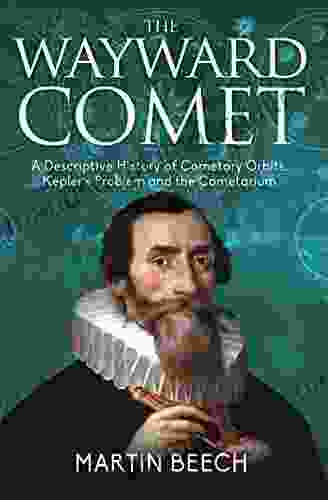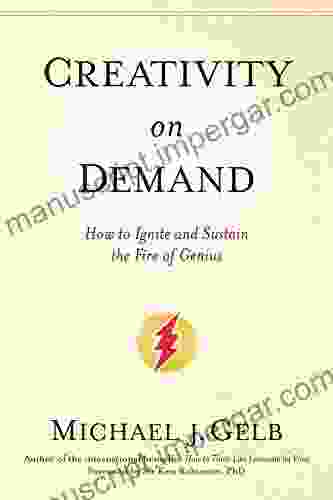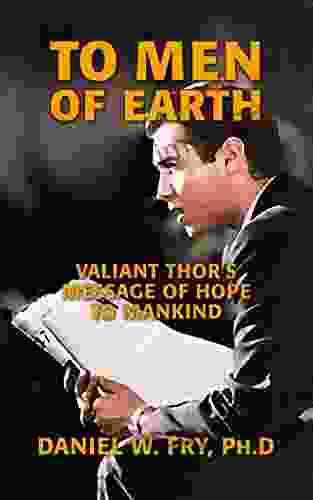A Descriptive History of Cometary Orbits: Kepler's Problem and the Cometarium

Comets are among the most fascinating and mysterious objects in the night sky. For centuries, astronomers have been studying comets, trying to understand their orbits and their origins. In the early 17th century, Johannes Kepler published his laws of planetary motion, which also applied to comets. Kepler's laws helped to explain the orbits of comets, but they did not provide a complete solution to the problem of cometary orbits.
In the late 17th century, Edmond Halley used Kepler's laws to predict the return of the comet that now bears his name. Halley's prediction was a major breakthrough in astronomy, and it helped to establish the scientific study of comets.
5 out of 5
| Language | : | English |
| File size | : | 30431 KB |
| Text-to-Speech | : | Enabled |
| Screen Reader | : | Supported |
| Enhanced typesetting | : | Enabled |
| X-Ray for textbooks | : | Enabled |
| Word Wise | : | Enabled |
| Print length | : | 375 pages |
| Lending | : | Enabled |
In the 18th century, Pierre-Simon Laplace developed a more complete theory of cometary orbits. Laplace's theory took into account the perturbations caused by the planets, and it provided a more accurate description of the orbits of comets.
In the 19th century, astronomers began to use photography to study comets. Photography allowed astronomers to track the motion of comets more accurately, and it also provided a new way to study the structure of comets.
In the 20th century, astronomers began to use space probes to study comets. Space probes have provided us with a wealth of new information about comets, including their composition, their structure, and their origin.
Today, astronomers continue to study comets, using a variety of techniques. Comets are a valuable source of information about the early history of the solar system, and they may also provide clues to the origin of life.
Kepler's Problem
Kepler's problem is the problem of determining the orbit of a comet. Kepler's laws of planetary motion provide a partial solution to the problem, but they do not take into account the perturbations caused by the planets.
The perturbations caused by the planets can be significant, and they can cause the orbit of a comet to change over time. In some cases, the perturbations can cause a comet to be ejected from the solar system.
Kepler's problem is a difficult problem to solve, and it is still not fully solved today. However, astronomers have made significant progress in solving the problem, and they now have a good understanding of the orbits of comets.
The Cometarium
The cometarium is a device that was invented in the 18th century to help astronomers study comets. The cometarium is a mechanical model of the solar system, and it can be used to simulate the motion of comets.
The cometarium was a valuable tool for astronomers, and it helped them to understand the orbits of comets. The cometarium is still used today by some astronomers, and it is a valuable resource for teaching astronomy.
Comets are a fascinating and mysterious part of the solar system. Astronomers have been studying comets for centuries, and they have made significant progress in understanding their orbits and their origins. The study of comets is a valuable source of information about the early history of the solar system, and it may also provide clues to the origin of life.
5 out of 5
| Language | : | English |
| File size | : | 30431 KB |
| Text-to-Speech | : | Enabled |
| Screen Reader | : | Supported |
| Enhanced typesetting | : | Enabled |
| X-Ray for textbooks | : | Enabled |
| Word Wise | : | Enabled |
| Print length | : | 375 pages |
| Lending | : | Enabled |
Do you want to contribute by writing guest posts on this blog?
Please contact us and send us a resume of previous articles that you have written.
 Book
Book Novel
Novel Page
Page Chapter
Chapter Text
Text Story
Story Genre
Genre Reader
Reader Library
Library Paperback
Paperback E-book
E-book Magazine
Magazine Newspaper
Newspaper Paragraph
Paragraph Sentence
Sentence Bookmark
Bookmark Shelf
Shelf Glossary
Glossary Bibliography
Bibliography Foreword
Foreword Preface
Preface Synopsis
Synopsis Annotation
Annotation Footnote
Footnote Manuscript
Manuscript Scroll
Scroll Codex
Codex Tome
Tome Bestseller
Bestseller Classics
Classics Library card
Library card Narrative
Narrative Biography
Biography Autobiography
Autobiography Memoir
Memoir Reference
Reference Encyclopedia
Encyclopedia Elsie Jones Smith
Elsie Jones Smith Rory Z Fulcher
Rory Z Fulcher Ole Thorstensen
Ole Thorstensen Cheater John
Cheater John Charles J Esdaile
Charles J Esdaile Lawrence Block
Lawrence Block Matthew Algeo
Matthew Algeo Chloe Martis
Chloe Martis Charles Weisinger
Charles Weisinger Cheryl O Brien
Cheryl O Brien Christopher Clarke
Christopher Clarke Daniel Rachel
Daniel Rachel Christine Meyers
Christine Meyers Christopher Depree
Christopher Depree Evelyn Brooks Higginbotham
Evelyn Brooks Higginbotham Murray N Rothbard
Murray N Rothbard Cheryl Dellasega
Cheryl Dellasega Christina Spangler
Christina Spangler Gail Gross
Gail Gross Cheryl Savageau
Cheryl Savageau
Light bulbAdvertise smarter! Our strategic ad space ensures maximum exposure. Reserve your spot today!

 Dale MitchellThe Ultimate Visual Guide to 122 Flowers, Leaves, Embellishments, and Extras:...
Dale MitchellThe Ultimate Visual Guide to 122 Flowers, Leaves, Embellishments, and Extras:... Sidney CoxFollow ·17.1k
Sidney CoxFollow ·17.1k Richard WrightFollow ·16.4k
Richard WrightFollow ·16.4k Patrick RothfussFollow ·3.7k
Patrick RothfussFollow ·3.7k Milton BellFollow ·11.9k
Milton BellFollow ·11.9k Charles ReedFollow ·4.1k
Charles ReedFollow ·4.1k Aleksandr PushkinFollow ·13.2k
Aleksandr PushkinFollow ·13.2k Jayden CoxFollow ·8.3k
Jayden CoxFollow ·8.3k Jeremy MitchellFollow ·13.4k
Jeremy MitchellFollow ·13.4k

 E.E. Cummings
E.E. CummingsOne Man's Story of What It Meant to be Pj
In the tapestry of life,...

 Caleb Long
Caleb LongPattern Theory in Video Keno: Unveiling the Art of...
Embark on an enlightening journey into the...

 Douglas Adams
Douglas AdamsUnveiling the Diplomatic Landscape: The Ottoman Empire,...
Delving into the History...

 Terry Bell
Terry BellThere Still Is No Off Season: Embracing Year-Round...
In a world consumed by routine and the allure...

 Ibrahim Blair
Ibrahim BlairBrain Teasers Games and Puzzles: Exercise Your Mind with...
Prepare to embark on a captivating journey...
5 out of 5
| Language | : | English |
| File size | : | 30431 KB |
| Text-to-Speech | : | Enabled |
| Screen Reader | : | Supported |
| Enhanced typesetting | : | Enabled |
| X-Ray for textbooks | : | Enabled |
| Word Wise | : | Enabled |
| Print length | : | 375 pages |
| Lending | : | Enabled |












